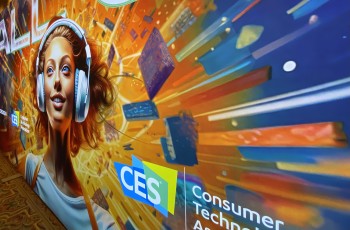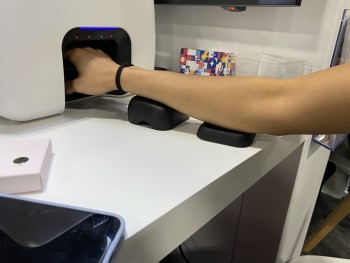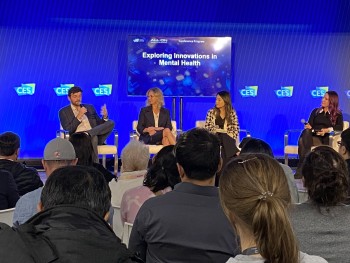Every so often I arrive at the Consumer Electronics Show (CES) and ask myself whether I really need three days on site. After all, the conference sessions and expo halls approach topics we talk about year-round – healthcare, security, fitness, Internet of Things (IoT), connectivity. And to be sure, there are areas that are not within our usual bailiwick, such as the latest OLED displays and electronic pain relief. But after the first few hours, the iterative wow factor sets in. Sure, we are familiar with airbags in cars. And yes, we are aware that, many times, the elderly do not fall and break a hip, but rather their hip breaks and they fall. So, there is something amazing when Indienov displays an IoT-enabled wearable airbag that can break a person’s fall, send an emergency alert and collate data that can help physicians determine the sequence of events. As flashy as an 8K OLED TV? Probably not. But more valuable to children and grandchildren? Quite possibly so.
Connected elder care considers mental well-being and social isolation, as well. AARP is hosting an AgeTech pavilion (yes, I will admit that from across the room I read it as “AgTech” and made a beeline for the space). Freestyle+ shared its interactive social and game platforms that are intended to provide senior citizens users with, in the words of a rep, “an extra skip in their day.” The games generate mental motion, and their interactive platforms bring people together from across distances.
Then of course there are the heavy-duty applications: app-based asthma management. Or hearing aids that transcribe voice-to-text for the hearing impaired. Or Whispp, which converts affected speech (perhaps stroke patients, or those with damaged vocal chords) into the user’s clear and natural voice in real time.
And then the lighter side of a CES – Pawport, which describes itself as the most “pawesome pet door.” It relies on a Bluetooth collar and can be retrofitted into existing doors. Or Nimble, an AI-enabled home manicure machine (I declined the offer to test it, but I am reconsidering). The robotic manicurist assesses the shape, size and curvature of the nail, distinguishing between nail and skin, and then applies a professional-grade polish. At approximately $600, it can be a terrific add for a small personal-care business. Or even a start-up for an enterprising young person (in 24 sessions it pays for itself . . . I think I see a side-hustle in the offing . . .).
But let’s get back to the technology that does not simply solve problems, but which transforms lives. A glove-like exoskeleton that gives users with compromised digital (as in fingers) mobility enhanced grip and a pincer grasp. Good enough to hold a thin credit card. Or the use of AI to assist (not replace) mental health and other care givers to detect subtle facial expressions that can disclose underlying medical conditions. And to intercept issues before a critical event that itself then cascades to other conditions. By way of example, depression is a common follow-on to heart attacks or chronic illnesses. But mitigation of those antecedent events can help ameliorate or even avoid the worst of the follow-on impacts. And again: technology that does not simply solve problems, but which transforms lives.
So, do I need the full days on site? Yes. CES is spread across multiple venues; I clocked three miles walking from my hotel to the first conference site yesterday (the shuttles take forever) and my total daily step count was 3x my usual. And yet I’ve yet to see a fraction of what is here. Does it engage topics we’ve discussed before? Yes. But the iterative wow factor ... the shiny, the new, the exciting, the transformative, the life-changing, the optimistic and engaging, the paradigm shattering newness of it all. That’s where it’s at.
On tap for today: gaming, esports and digital health. More to come tomorrow.




